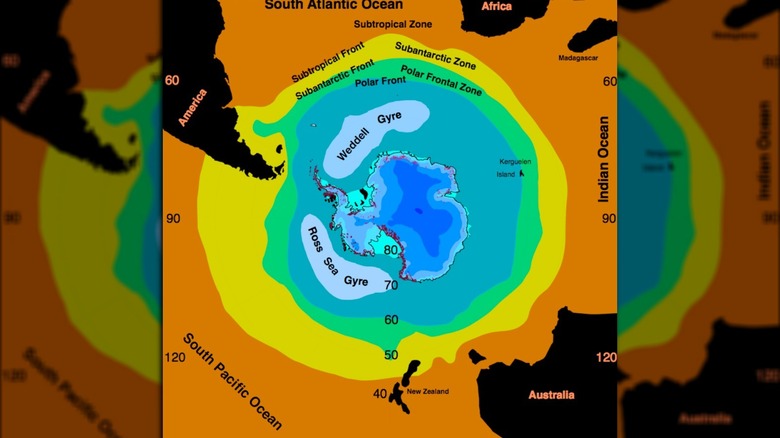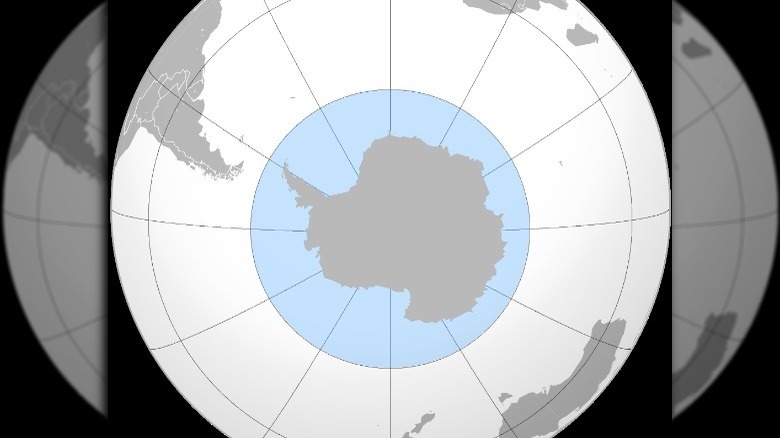The Truth About The World's Fifth Official Ocean
If you'd asked National Geographic a week ago how many oceans there are, they would have told you "four." There's the Atlantic and the Pacific Oceans, of course, as well as the somewhat smaller Indian Ocean, and the oft-overlooked Arctic Ocean. But as of June 8, 2021 — "World Oceans Day" — National Geographic's team of geographers has formally recognized a fifth ocean: the Southern Ocean.
The Southern Ocean is essentially the counterpart to the Arctic Ocean; it's a roughly circular ocean encircling the entire continent of Antarctica. Seth Sykora-Bodie, a National Geographic Explorer, describes the Southern Ocean as a unique place: "Anyone who has been there will struggle to explain what's so mesmerizing about it, but they'll all agree that the glaciers are bluer, the air colder, the mountains more intimidating, and the landscapes more captivating than anywhere else you can go."
But National Geographic is not the first entity to recognize the Southern Ocean; many scientists had already advocated for giving the Southern Ocean its own "ocean" label. Yet other geographers still consider the water around Antarctica to be a southern extension of the Atlantic, Pacific, and Indian Oceans, rather than its own unique body. In weighing the evidence, Nat Geo ultimately decided to side with the scientists who advocated for labeling the Southern Ocean as a fifth official ocean. So, after all these years, what led to that decision?
National Geographic formally recognized the "Southern Ocean" around Antarctica as Earth's fifth ocean
The main reason that National Geographic decided to recognize the Southern Ocean as its own body of water is the Southern Ocean's strong current. Per Nat Geo, that current (known as the "Antarctic Circumpolar Current") began around 34 million years ago, when the continent of Antarctica split off from South America. Since then, Antarctica has been surrounded by swift, east-west, circular currents. Those currents go as far north as 60° south of the equator — a line that has been designated as the limit of the newly-defined Southern Ocean.
Additionally, the Southern Ocean's swift currents have helped to keep Antarctica a geographically isolated and unique continent throughout history. Nat Geo reports that thousands of species inhabit Antarctica and are found nowhere else on Earth.
The Southern Ocean is both colder and less salty than the oceans to its north. Likewise, its strong current helps move heat around Earth's other oceans — and the currents play a hand in trapping carbon in the deep waters. Thus, the Southern Ocean plays a critical role in regulating Earth's climate. National Geographic hopes that its recognition of the Southern Ocean will help draw more attention to that region, which is in particular need of conservation efforts.
So, if you want to keep up with the times, make sure to go out and buy a new National Geographic map to see the updated "Southern Ocean" label.

